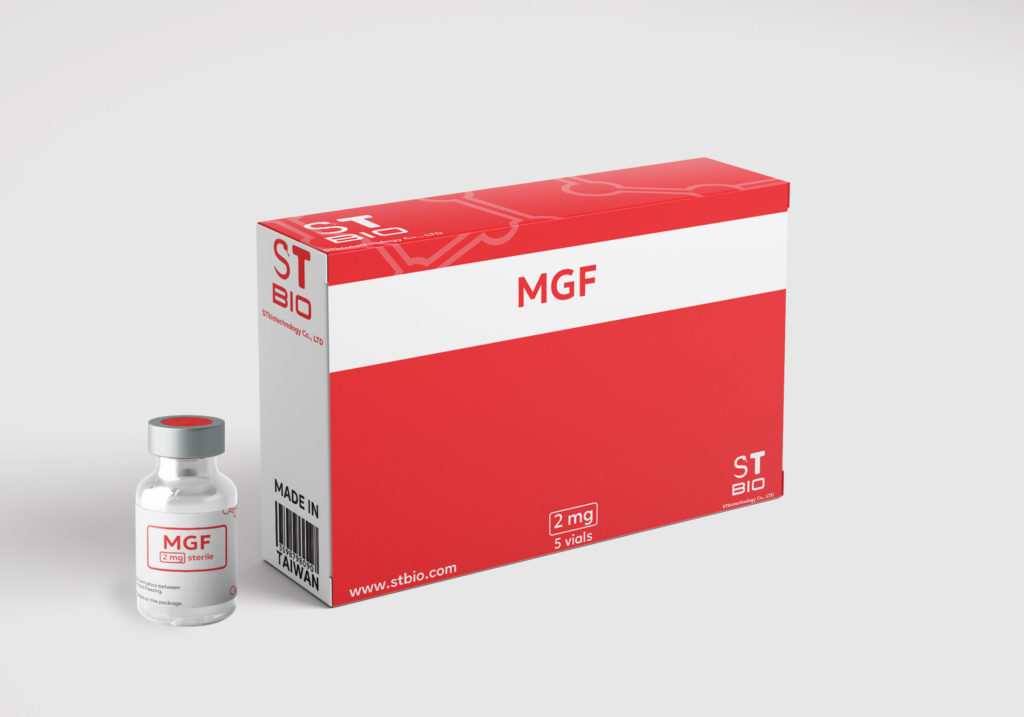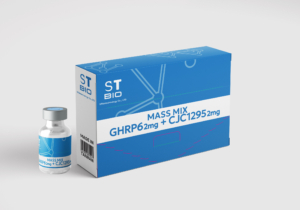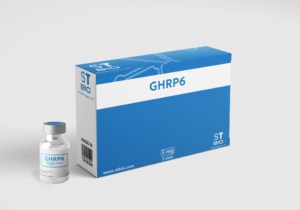
MGF
Mechano Growth Factor (MGF) is a variant of the Insulin-Like Growth Factor-1 (IGF-1), often referred to as IGF-1 Ec in humans and IGF-1Eb in rodents. It earned the name MGF because its RNA is expressed in muscle tissue as a response to muscle damage or overuse. The peptide’s C-terminal region plays a key role in the alternative splicing process that differentiates MGF from other forms of IGF-1. This splicing occurs due to a shift in the reading frame, where the specific C-terminal sequence (known as the E-domain) is encoded by exon 5 and part of exon 6. Interestingly, MGF has the unique ability to act on muscle tissues independently, thanks to its E-domain. Furthermore, MGF and IGF-1 differ in their effects, with MGF promoting the proliferation of satellite cells, while IGF-1 drives cell differentiation (Dluzniewska et al. 2005).
Age-Related Muscle Loss and the Role of MGF
MGF appears to serve several important physiological functions, with its reduced expression potentially contributing to age-related muscle deterioration. One such example is sarcopenia, the gradual loss of skeletal muscle function with age. Research indicates that younger individuals are more responsive to MGF, whereas older individuals experience a diminished response, leading to reduced muscle regeneration. Additionally, MGF has shown neuroprotective potential, as studies have demonstrated that it can protect facial neurons after nerve damage when expressed from a plasmid vector (Dluzniewska et al. 2005).
How Does Mechano Growth Factor Work? Muscle Growth Explained
When muscle experiences mechanical stress, such as through resistance training, the IGF-1 gene is activated and undergoes differential splicing. Initially, the gene is spliced to produce predominantly IGF-1Ec (the MGF variant). This triggers the activation of satellite cells, which supply undamaged nuclei necessary for the growth of new muscle fibers and tissues. MGF also stimulates the production of new proteins. Following this phase, the body shifts toward producing IGF-1Ea, which is released systemically from the liver and continues to promote protein synthesis. This sequence of IGF-1 splice variants is believed to be a key mechanism behind muscle regeneration and repair.
Recent Research on Mechano Growth Factor
The expression of IGF-1 has been linked to myocardial pathophysiology, with two splice variants—IGF-1Ea and MGF—detected in rodent heart tissues. Research has analyzed the expression of these IGF-1 transcripts in rat heart muscle following myocardial infarction (heart attack). Both IGF-1Ea and MGF expression levels increased significantly in the late stages of recovery (4 to 8 weeks post-infarction), indicating their role in heart repair. Although serum IGF-1 levels initially decreased in infarcted rats, they stabilized during the later phase of recovery. Notably, MGF’s effects were independent of IGF-1R, suggesting a distinct pathway for MGF in myocardial repair, supported by in vitro experiments showing activation of ERK1/2, rather than Akt phosphorylation, in myocardial cells.
Additionally, monoclonal antibodies that target MGF have been developed through cell fusion techniques. These antibodies specifically recognize the human MGF peptide, distinct from IGF-1, particularly within the amino acid region 87-111. ELISA tests have demonstrated strong binding affinity for both the full-length MGF and its fragments, which can be used to quantify MGF through sandwich-type assays (Kravchenko et al. 2006).
This expanding body of research highlights the unique role of MGF in tissue repair and suggests its potential applications in therapeutic settings.




